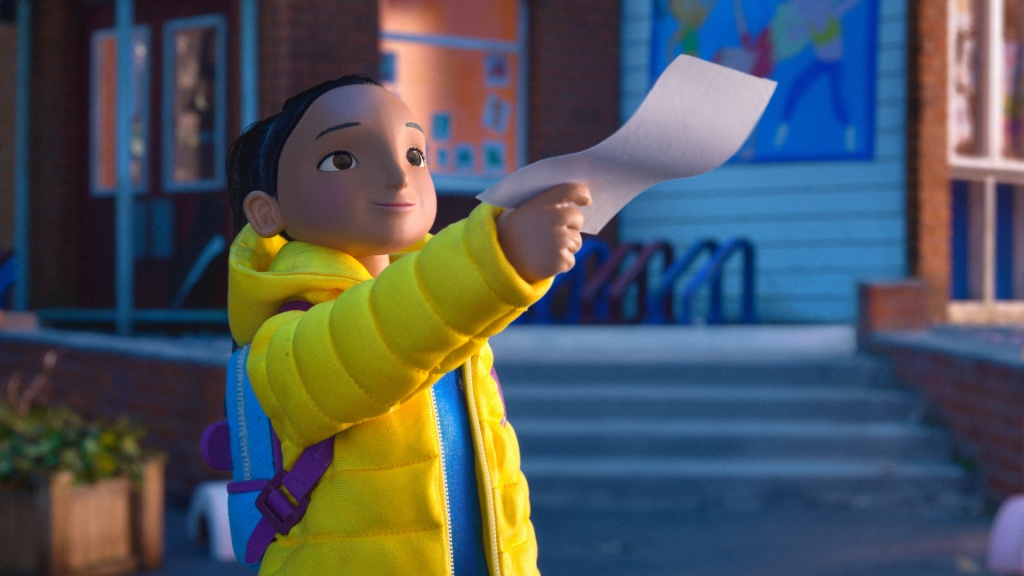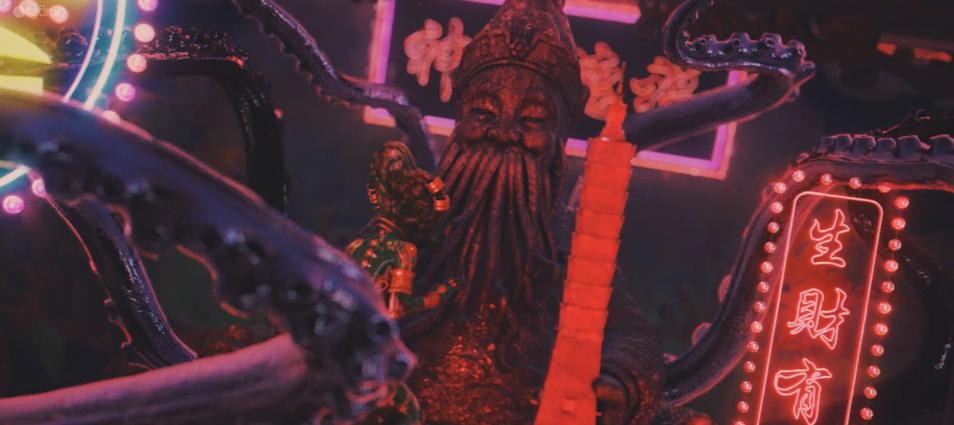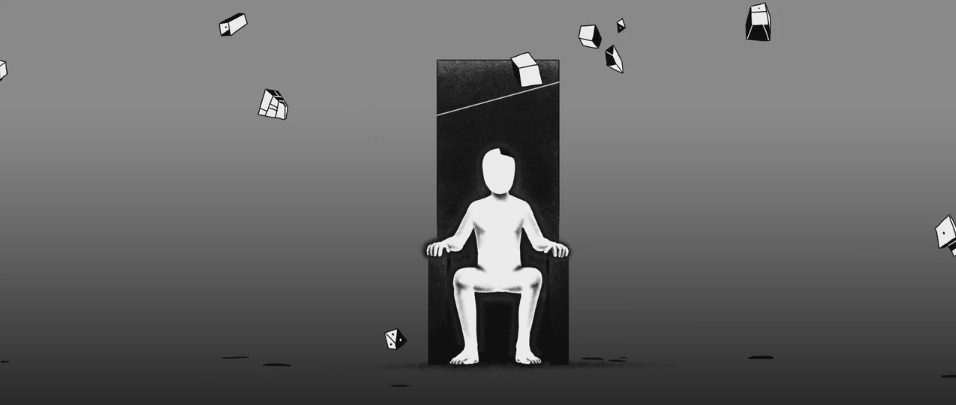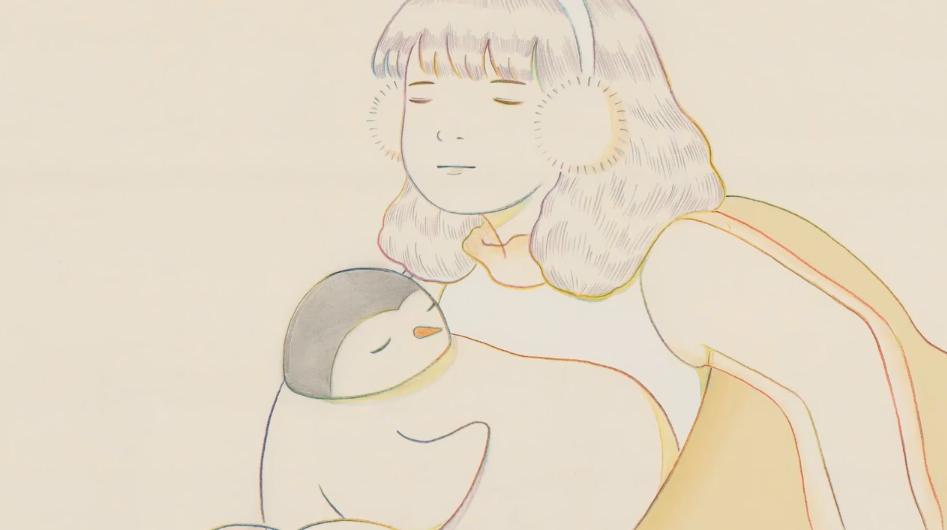【夢工廠動畫總監 Dan Wagner 談《功夫熊貓》】【Yao】
原文:CG Society Production Focus By Renee Dunlop
翻譯:Yao
Dan Wagner was Head of Character Animation. He first started in 2D animation at the age of 8, and switched to 3D on Shrek 2. He started on Kung Fu Panda before the characters had any rigs, so, falling back on his many years as a traditional animator, worked on test animations for main character Po in pencil and paper. The film was in animation for a year and a half. Throughout, Wagner’s mantra was “ambient motion”, the importance of keeping the characters alive through subtle queues, be it breathing, or a lifted hand that was fighting against gravity no matter how strong the pose.
Dan Wagner 是《功夫熊貓》的角色動畫總監。他早從八歲就開始製作2D動畫,參與電影《史瑞克2》時轉型為 3D 動畫師。在《功夫熊貓》還沒有做任何骨架綁定(rig ) 的階段,他就受命開始為主角阿波(Po)做動畫測試,重拾紙筆,回歸他早期從事的傳統動畫。《功夫熊貓》在動畫的製作階段花了一年半的時間。這段期間,Wagner 的口頭禪就是「注意小動作」(ambient motion)。不管你的姿勢(Pose)多麼富有張力,為了使角色栩栩如生,那就必須透過細微之處來表現。像是呼吸的起伏,或是為了對抗地心引力微微舉起的手。
“If you freeze something in CG, it just looks totally dead. Some shows require that; stylistically you want to go pose to pose and make it snappy, like in Madagascar." We wanted to make Kung Fu Panda feel more natural, the characters to feel more real. If you look closely, you’ll be see, even when the characters are standing still, there is something moving, giving that extra bit of life.
Wagner:「假如你讓角色在電腦動畫(CG ) 裡呈現靜止狀態,那這個角色看起來就像是死掉一樣,毫無生氣。有時候我們會需要這樣的表演風格,希望轉換姿勢時的節奏(pose to pose)非常俐落明快,像是電影《馬達加斯加》( Madagascar)一樣。但是在《功夫熊貓》裡,我們想讓表演看起來更自然,角色更具真實性。
It could be a small thing like their eyes darting back and forth, hitting certain poses well before the character starts saying something. It’s just trying to give the characters thought before one says the line.”
因此,即使角色是站著不動的狀態,但是假如你仔細去看,你仍會看到他們有一點點的小動作,這讓角色更有生命力。這些可能都是小動作,像是他們的眼睛瞄來瞄去,或是在開口前擺出特定姿勢。透過這樣的小動作,我們試圖讓角色在說話前看起來是經過思考的。」
Of course, such a diverse cast of characters needed different personalities and rigs. The Viper character was, not surprisingly, the most difficult character. Snakes are deceptively difficult, as mentioned by animators on Harry Potter and the Chamber of Secrets and 10,000 BC. It was no different for Viper, which required two rigs and was animated on a path that was also animated. The path had points for manipulation so the movement would appear more organic.
當然,不同的角色需要不同的個性設定與骨架綁定(rig)。不意外,Viper (台譯:俏小龍)就是那最困擾我們的角色。「蛇」是非常令人頭痛的生物,像是在電影《哈利波特2--消失的密室》(Harry Potter and the Chamber of Secrets ) 與《史前一萬年》(10,000 BC.)當中,動畫師都面對過這樣的困難,《功夫熊貓》中的Viper也帶來同樣的挑戰。Viper 擁有兩種模式的骨架綁定,而且還必須在特定的路徑(path)上做表演,路徑本身也需要有變化,還好這些路徑擁有很多控制點可以調整,所以 Viper 動起來就能更真實自然。
The result looked like the snake was being pulled along a train track. On top of that path was the Viper rig. Not only could they animate the snake on the path, they could separate the snake from the path and animate separate behaviors. It was a very complex and powerful rig with a massive learning curve. Wagner worked on the rig initially before passing it to Fred Nilsson, who improved it and offered tips and tricks to the team, becoming the specialist and go-to guy for that character.
從最後的結果來看,蛇就像是在火車鐵軌上推進的列車,上方跑的就是 Viper 的骨架。我們不但能讓 Viper 在軌道上表演,也可以讓骨架離開軌道後,依然能繼續做其他獨立動作。藉著過去大量的經驗累積,最終我們可以獲得像這樣強大而且複雜的骨架系統。Wagner 是最開始做Viper 骨架綁定的人,後來交給了動畫師 Fred Nilsson,Fred 持續改進,為動畫組提供各種大小建議,甚至可說成為 Viper 專家,之後專門解決 Viper 的各種疑難雜症。
Wagner and his team had their work cut out for them. “Just posing Viper took a long time to do. We had 13 points on her, and could lock any of those points to global space, but sometimes we had to have it locked in global space but still moving on the path.
Wagner 和他的團隊在工作內容上各司其職。Wagner 表示:「光是幫 Viper 擺個姿勢就要花上很一段時間,我們總共在她身上設定了十三個控制點,你可以在全局空間(Global space)中的任一位置進行鎖定,不過,我們將 Viper 鎖定在全局空間裡時,還需要讓她能夠在軌道上(編按:軌道的 local space)移動。
There were a lot of hoops we had to jump through to get certain movements correct.
我們必須透過一連串環環相扣的步驟,只求讓某些動作能更為確實。
If it was a close-up of the Viper, just the headshot, then we could strictly use FK, but it was a very heavy rig.”
好比說,現在是 Viper 的特寫鏡頭,只需要拍頭的部位,那我們可以很精確地決定只使用正向動力學(FK)。儘管如此,Viper 仍是一個對電腦負擔很大的骨架。」
Though the characters had human traits, they wanted all to emulate the actual animal itself. Tigress was not only bipedal, but was designed to run on all fours, using the same rig. The same applied to Monkey.
儘管這些其他角色擁有人的特性,製作團隊還是希望角色們能模擬真正動物的姿態。像是悍嬌虎(Tigress)不僅有二足模式(bipedal),她也有四足模式來呈現奔跑運動,這兩模式皆設計於同一付骨架下。另一角色--猴王(Monkey),也擁有同樣的骨架設計。
They also utilized squash and stretch using the DreamWorks proprietary system, Emotion, or Emo for short, one that has been around since the mid 80’s when it was just a flying logos program. DreamWorks improved on the software for Antz and Shrek. It’s a muscle based system on the whole body, designed to make everything move realistically. Another muscle based system called an ENet was used on the face, so if a character was to move a cheek, all of the points on the face are all connected, it would move the points surrounding it in varying degrees.
他們還使用夢工廠(DreamWorks)研發的專利系統:Emotion(簡稱 Emo),來製作壓縮與拉伸動作(squash and stretch)。這套軟體在80年代中期時,只是個為了某個標誌包裝(flying logos)的小案子而開發。但夢工廠不斷改善這套軟體,在之後的電影《小蟻雄兵》(Antz)與《史瑞克》(Shrek)皆派上用場。Emo是一套以全身為基礎的肌肉系統,它的功能是讓所有的身體部位動起來更逼真。另一套同樣以肌肉系統為基礎的軟體是ENet,主要應用在臉部表情,假如角色動了動臉頰,臉上的其他部位也會跟著牽動。因為他臉上所有的控制點都具有關聯性,所以臉頰周圍的控制點就能因此產生不同程度的變化。
Wagner’s team also added a feature on the panda’s large belly to keep the arms and legs from colliding into the mass. The belly acted like a gas filled bag, so if an arm pushed into the body, the belly would shift away. “There was no way we could animate this character without having his arms and his legs pushing his fat out of the way. We could inflate or deflate the bag. In some poses he looked a little too fat so we had to deflate him, like if he was sitting on his butt we had to deflate him a little because he just looked like a ball.”
為了不讓熊貓的手腳和大肚腩擠在一塊,Wagner的團隊也為大肚子添加了能與手腳做體積碰撞的新功能。大肚腩動起來就像是一支吹滿氣的大袋子,所以當手臂靠向身體時,肚子會碰撞順勢移開。Wagner解釋:「當熊貓移動手腳時,一定得擠出他身上的肥肉才行,所以我們會調整這只袋子一下,視情況讓肚子變大或變小。某些姿勢熊貓看起來會有點胖,像是當他一屁股坐下的時候,我們就需要對他的肚子洩一點氣,要不然他整個人看起來就太像顆球。」
Wagner not only brought in martial arts experts to train the animators, he had a few animators on his team that had studied it for years. Animator Michael Kiely would give demonstrations on certain moves and stances and the logic behind each. Supervising Animator Rodolphe Guenoden, who also did storyboard work and acted as fight choreographer, had studied for most of his life.
Wagner不只找來武術指導訓練底下的動畫師,他甚至還特別找了幾名有學武經驗的動畫師到他的團隊裡。動畫師 MichaelKiely 會實際示範特定的武打動作和站姿,並說明每個動作背後的意涵道理。資深動畫師 Rodolphe 習武了大半輩子,因此他不僅參與故事板(storyboard)的作業,還身兼影片的武術指導。
Every week he would show films like Crouching Tiger or Fists of Fury, often freezing on a frame so the animators could rough out the pose in pencil, continuing every few frames to get a feel for where the character had put their weight and where limbs were extending.
每週Wagner都會安排動畫師看功夫電影,像是李安導演的《臥虎藏龍》(Crouching Tiger)或是李小龍主演的《精武門》(Fists of Fury)。他會讓影片停在某個畫面,請動畫師當場素描武打姿勢,然後再一格一格往下播放,讓動畫師去找出角色的重心位置和他們的四肢是如何伸展的。從中領會武打時角色如何移動重心及施展拳腳。
He would sketch poses and upload that information so the animators could see the arcs on their monitors, frame by frame. It was an animatic, not full animation, but a framework of how he wanted the characters to fight. The animation team also attended several in-house seminars by Wushishu expert and performer Eric Chen, who offered details on how to hold a staff, step through certain moves, and where to put the weight on a characters foot when they were trying to flip an opponent.
Wagner 會畫下這些姿勢然後上傳分享,所以動畫師就可以在螢幕上一張一張的看出這些動作的弧線。這只是動態腳本,並非完整的動畫,但可以從此得出 Wagner 希望角色在鏡頭中呈現的打鬥動態。動畫組同時也參加了多場內部研討會,由武術專家兼特技演員 EricChen 擔任主講。他提供了武術裡特有的動作細節,像是:握住棍棒的手法、移動中的步伐、出手的時候將重心移往下盤等。
In addition, what became known as the Furious Five: Monkey, Tigress, Viper, Crane, and Mantis, were named after the original fighting styles that still exist today.
除此以外,片中我們熟知的蓋世五俠:猴王(Monkey)、悍嬌虎(Tigress)、俏小龍(Viper)、靈鶴(Crane)、快螳螂(Mantis),他們的命名大有來由,皆是根據沿襲已久的武功招式來命名,這些武功招式至今仍流傳。
For example, if a human was emulating a crane, they would put both the hands in a shape mimicking a beak, but instead, the desire was to maintain the animal characteristics in those moves. Instead of Crane using his wings to create the beak shape, he would actually use his beak. And to maintain solid communication throughout the crew, the animation team worked closely with the layout crew and camera people to give them an idea of what was planned and making these characters fight.
舉例來說,人在打鶴拳時,是用雙手來模仿鶴的長喙。而在蓋世五俠的武打動作裡,我們希望保有動物在該招式裡的原本特徵。 所以,靈鶴(Crane)不需用翅膀來模擬尖尖的長喙,他會直接用自己的嘴巴來攻擊。為了讓團隊保持良好無礙的溝通,動畫組與佈局組(Layout)和攝影機組(Camera)密切合作,務必讓大家都知道劇中人物在鏡頭中打鬥的位置與安排。
One pinnacle of the film was when Tai Lung fights the Furious Five on a decaying rope bridge, a scene that involved character animation, effects animation, with everything intertwined, and it looked impossible to do.
影片中有一段高潮是蓋世五俠與殘豹(Tai Lung)在破敗的繩索吊橋上對決,這場戲幾乎牽涉了所有面向,包括角色動畫、特效動畫,以及兩者的交互作用,難上加難,簡直是不可能的任務。
They had to find a way of procedurally breaking geometry and be able to describe fighting action with peril , so they used a procedural break technique that was also art directable, called “procedural fracturing.”
為了營造驚險刺激的打鬥場面,特效團隊必須必須逐一製造3D模型爆破的效果。最後他們用了一種用程式製造碎片的技術,融合了美術導向的操作方式,稱為「逐步破碎法」(procedural fracturing)。
Manninen explains. “Lawrence Lee developed a method where we had an unfractured original model we could paint on top of, designing the break pattern for the pieces. Then we created cutting volumes by creating a voxel grid around the unfractured model, then it voxelized based on the painted colors on the surface.
Manninen 解釋:「 Lawrence Lee 研發了一種方法,我們可以直接在尚未做破碎的模型上面畫貼圖,設計想要碎裂的形狀。接著,我們創建出環繞在原模型上的立體象素網格(voxel grid)來製造大量的碎片,如此一來,這些破碎的立體像素皆能保有原先模型上的顏色。
Based on cellular automated techniques you grow the regions until all the voxels are filled in. Then you convert that to polygon meshes using a marching cube algorithm. Then you can use the unfractured model to convert the texture coordinates to have texture continuity through the breaking. You then use those polygonal meshes as a constructive solid geometric algorithm to create the final debris pieces.”
根據細胞自動化技術(cellular automated techniques),這些切割體積會自動增生直到被立體象素填滿,再使用切分立方體演算法(marching cube algorithm)將之轉為實體模型(polygon meshes)。接下來,你可以運用原模型上的貼圖紋理,在模型變成碎片時,仍擁有事先畫好的紋理質地,這可使整個轉變過程更具有連貫性。你再將那些實體模型當成建構式實體幾何演算法(constructive solid geometric algorithm)來製造最後的破瓦殘礫。」
Basically, what that allowed the animators to do was paint on the models where the breaking pieces were constructed.
基本上,這個技術就是允許動畫師可以直接為碎片模型上色。
The system makes it appear as if procedure breaks the geometry yet keeps the textural info intact so the textures didn’t pop. Procedural parenting kept the characters on the bridge after the dynamics were applied. This topic, along with several others on the film, will be covered at this years’ Siggraph.
因為這個技術實現了當原始模型在程式下裂成碎片後,仍能保有完整的貼圖資訊,這樣原先的物件和後來的碎片才不會格格不入,顯得突兀。這個程式上的親屬關係(Procedural parenting)功能,也能讓角色經過動力學的計算後,仍繼續保持在吊橋上。這樣的應用方法,再加上電影裡其他大有看頭的其他應用,將會是今年美國電腦繪圖大會(2008 Siggraph)中受人矚目的題材之一。
By staying away from pop culture and modern day references, DreamWorks hopes this film will be timeless, and 50 years from now would still be relevant.
夢工廠希望《功夫熊貓》能成就不朽,不受流行文化與當代社會的影響而過時。即使過了五十年,仍會是大家津津樂道的佳作。
And in 50 years, it might still be the favorite of some DreamWorks artists. “I had a hard time leaving it,” said Wagner. “Really. Most of the animators felt that way too. They didn’t feel worn out, they really believed and enjoyed working on this film. It wasn’t too much OT, we worked Saturdays for the last few months, but other than that it was a well run film.
而在這五十年之間,《功夫熊貓》仍會是某一群夢工廠藝術家心目中的最愛。Wagner說道:「我真的很捨不得電影殺青,許多動畫師跟我有同樣感受,他們不會覺得精疲力盡,事實上他們是非常專注地工作,並且樂在其中。我們並沒有加太多班(OT:overtime),只有在最後的幾個月我們才需要星期六加班,其他時間都是按著規劃走,運作順暢。
We did our fight sequences in the middle of production, we didn’t wait and leave them till the end of production so that really helped us out. We did the hard stuff half way through. So all the acting etc was all down hill and easier to manage. Nobody was tired.
我們在製作中期就先做好打鬥的橋段(fight sequences),所以我們不必等到最後才來趕工,這樣的規劃對我們來說幫助很大,因為我們把最難的部分在中間就先完成了,所以整個過程就像下坡一樣,愈來愈簡單而且容易掌握。因此,沒有人在過程中感到厭倦疲累。
We’ve had some productions that were stressful, but this one ran very smoothly and DreamWorks is this production as a template on how they would like future productions to run. We lucked out, and there really was a sense of harmony on the animation. Even the production people. we all seemed like we were on the same page, believing in the film.
我們曾經參與過一些緊張而且壓力大的製作,但這一次的製作過程卻非常順利,夢工廠甚至把這次的經驗拿來做為日後製作電影的範本。我們很走運,而且《功夫熊貓》的動畫裡也真的呈現出一種和諧的氛圍,甚至感染了參與製作的所有人。整個團隊就像是在同一條船上,對這部電影有著相同的信念。
That doesn’t happen very often. I tell animators, you will be working on dumpers for most of your career, but every once in a while you get a gem. Kung Fu Panda was a gem.”
這並不常見。我告訴我底下的動畫師,你們的職業生涯裡,多數時間可能都像在垃圾場裡撿垃圾,但三不五時,你可能會找到寶石,而《功夫熊貓》就是這樣的一顆寶石。」
相關閱讀( Yao 翻譯):
【AM T&T 決定動畫師的優劣要素?】【Yao】
【AM T&T 動畫師應該要用鏡頭角度去『偷』嗎?】【Yao】
【3D網狀拓樸學的小知識:四角面vs. 三角面】【Yao】
【AM T&T 動畫公司的面試是怎麼一回事?】【Yao】
【AM T&T 關於角色對話的秘訣】【Yao】
【AM T&T 如何讓不討喜的角色討喜?】【Yao】
















